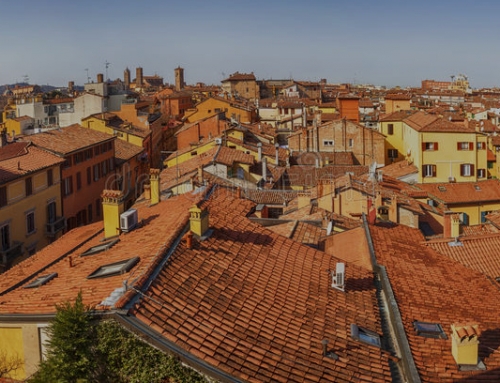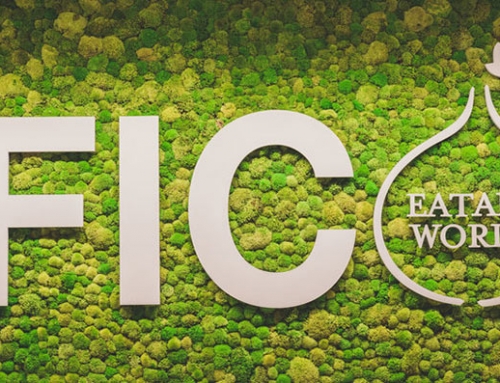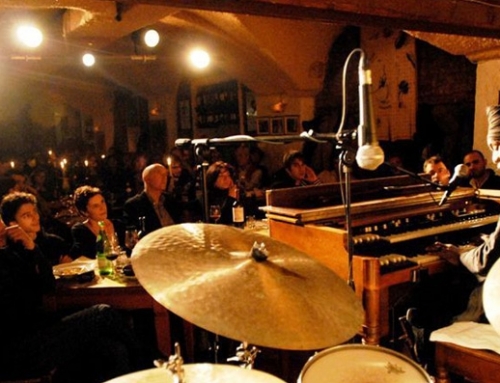A culturally rich town with a stunning architecture
When it comes to art and culture, Bologna is a gold mine. Furthermore, the city is home to the oldest university in Europe, the Alma Mater Studiorum. It was founded in 1088 and has been a heaven for intellectuals and creative individuals ever since luminaries such as Dante and Petrarch passed through its walls in the 14th century. The architecture of the incredible medieval city centre, with a charming 40 kilometres of porticoes, is considered a treasure left to us by history; there are more than 50 museums in the town. Whilst walking around the city, you will realise that you are surrounded by an open-air art exhibition, adorned with majestic churches, palaces, and monuments.
A green city
In the heart of Bologna there are several “green” treasures: beautiful public parks and gardens, where people can rest and enjoy pleasant moments surrounded by nature. On sunny days you go to the park: Giardini Margherita or Montagnola. They lie in the heart of the city – naturally you can choose one of Bologna’s other green islands!
What to see in the city centre
Piazza Maggiore
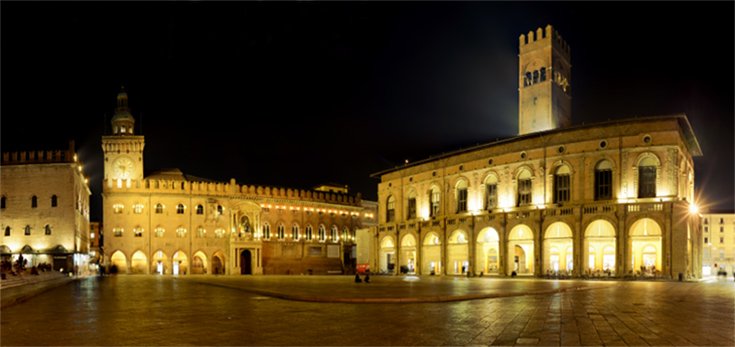
Piazza Maggiore is the heart of Bologna, being the centre of the city’s religious and civil life. It is famous for the Fontana di Nettuno and for the ancient medieval buildings in the square: The Palazzo Comunale (City Hall) , the Palazzo dei Bianchi, the huge San Petronio Basilica and, in front of this, the Palazzo del Podestà. All these building bear witness to the city’s history from the year 1200, when the people of Bologna needed a market square, where you can now find the fountain of Neptune.
Location on Google Maps
Basilica di Santo Stefano
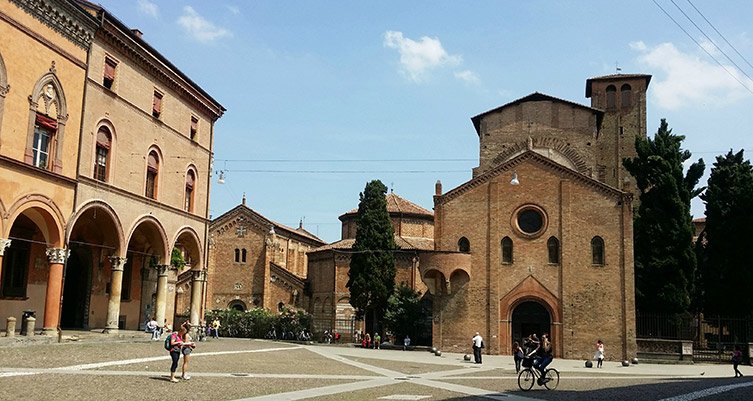
The Basilica is a complex of sacred buildings that form the “Sette Chiese” (Seven churches). The complex is placed in a triangular square (which has been recently restored). All the buildings are very ancient, and even if they were built in different periods, they have a certain stylistic uniformity. This complex is the most interesting and best preserved Romanesque attraction in Bologna.
Location on Google Maps
Basilica di San Petronio
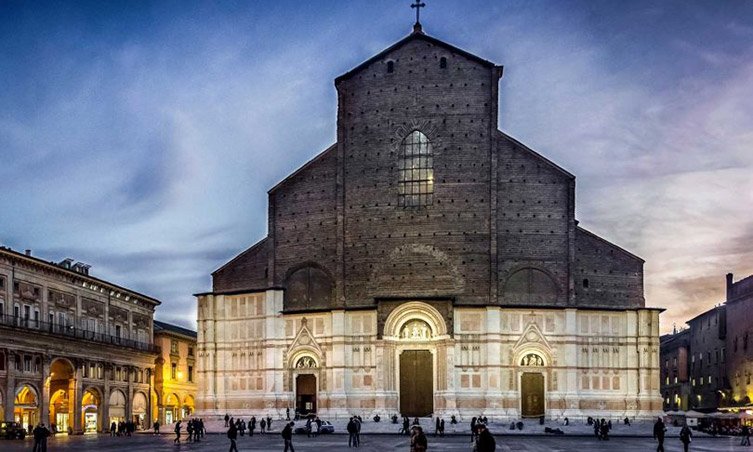
The Basilica di San Petronio is the most important church in Bologna and it is the fifth biggest church in the world. Its construction works began in 1390 and continued for centuries. In order to build this enormous basilica – Bologna’s pride and joy – towers, houses, and eight churches were destroyed. San Petronio has long been used by the township of Bologna as a public building for many different purposes: a place of ceremonies, court, public meetings…
Location on Google Maps
Torre Garisenda & Torre degli Asinelli
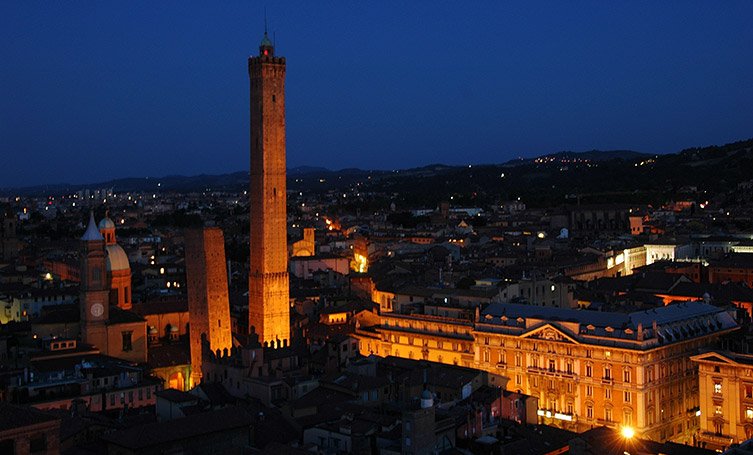
The two towers are one of the main features of Bologna. Between the XII and XIII century many towers were built – but nowadays only less than twenty are left. The Asinelli tower was built between 1109 and 1119, commissioned by the Asinelli family, which used the tower for military purposes. In 1448 a small stronghold was added to the tower in order to host soldiers. Nowadays the arch and the arcades host artisan shops, in memory of the commercial spirit of the city during the Middle Ages. Visitors have to climb up 498 wooden steps to reach the top of the tower – which is 97.2 metres tall! From there they can enjoy the beautiful view of Bologna’s red roofs. Garisenda Tower is smaller (47m tall) and cannot be visited.
Location on Google Maps
Bologna “canals”
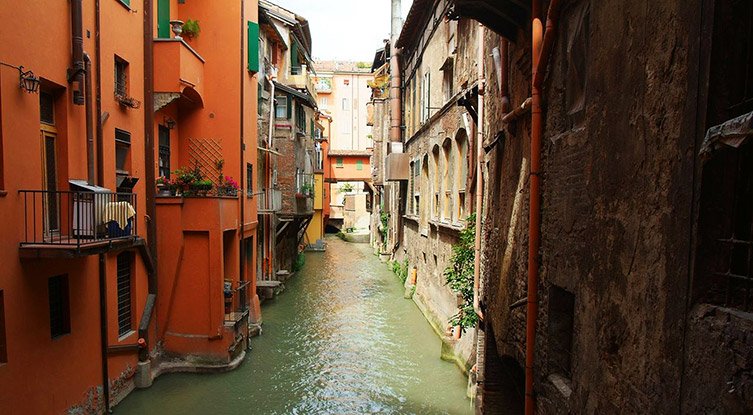
Not many people know that Bologna has always been a water city – a little Venice, now mostly hidden. The most charming part of this unusual side of Bologna can be discovered by opening a small window located in Via Piella. Here, as though in a vision, the view overlooks the Moline canal, used for centuries to power water mills where people used to work wheat. Forgotten for decades, so much so that most of the canals were buried in the 50’s, the aquatic nature of Bologna has been recently rediscovered by its residents, who are finding new ways to bring it back. In addition to the window in Via Piella, other “peep-holes” have been opened on Canale delle Moline in via Oberdan and via Malcontenti. Now for one of Bologna’s secrets… If you continue walking down towards via Piella and across a bridge, you’ll come to a wall with a little, 2-foot-square, cut-out window. When you look through it, you may be surprised…
Location on Google Maps
Areas surrounding Bologna: places you can easily reach by public transport
Complesso di San Michele in Bosco
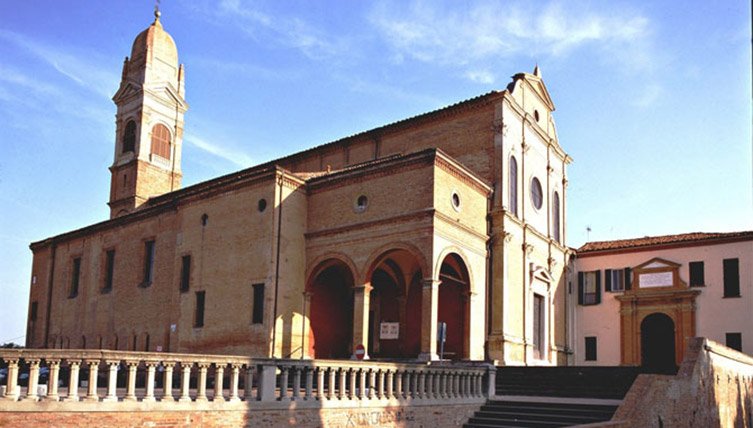
The Church of San Michele in Bosco is an impressive building which comprises of both the church and the nearby convent, which once belonged to the Olivetans. It is located on one of the Colli Bolognesi (the Hills of Bologna) and from the church yard you can see the whole city.
Located on a hill not far from the city’s historical center, the area housed monastic structures as early as the 4th century AD.
The large complex was expropriated during the Napoleonic era and later used as a prison for criminals sentenced for life.
Location on Google Maps
Rocchetta Mattei
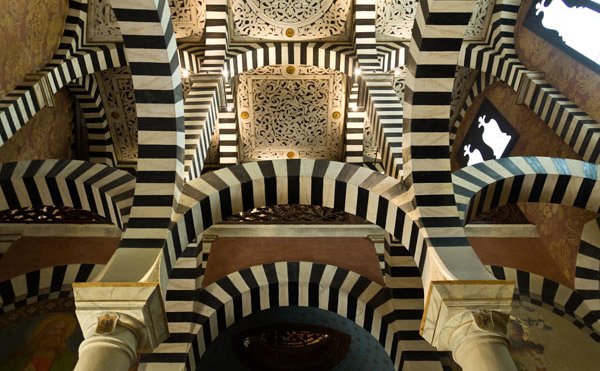
Rocchetta Mattei is a fortress in the northern Apennines, perched on a hill at 407m above sea level in the area of Savignano (municipality of Grizzana Morandi), in the metropolitan area of Bologna.
The fortress was built by the Count Cesare Mattei (1809-1896) on the remains of an ancient medieval castle which belonged to Matilde di Canossa (a.k.a. Matilda of Tuscany).
The fusion of different architectural styles, such as the Medieval Gothic with the Moorish style, make the Rocchetta a mesmerising and fantastic place, full of expertly decorated small rooms which are linked together by a labyrinthine plan with lodges, spiral staircases, and towers.Two of the most enchanting parts are “Il Cortile dei Leoni” (The Lions’ Courtyard), which is a reproduction of the courtyard of the Alhambra of Granada (Spain), and the chapel, an imitation the Cathedral of Cordoba (Spain).
Location on Google Maps
Santuario di San Luca
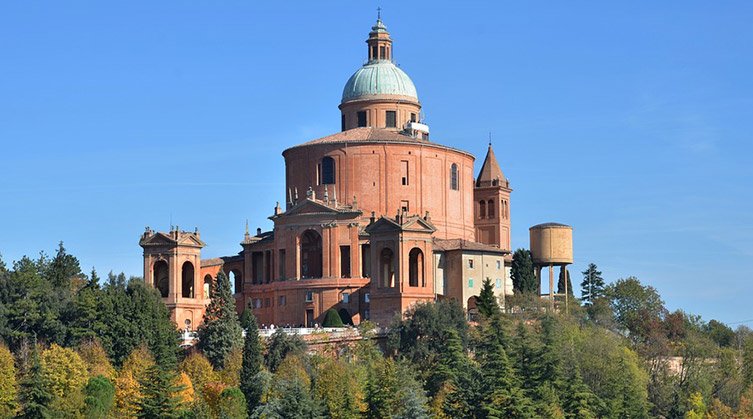
The sanctuary is located on top of a hill that overlooks the entire city. Take bus number 20 from the city centre and alight at Meloncello Arch stop. The arcade connecting Porta Saragozza to The Sanctuary of San Luca is the longest in the world. Along its 3.5 km stand 666 arches, each marked with a number: the first 306 connect Porta Saragozza to Meloncello Arch, while the last 360 are located in the hill area from Meloncello to Colle della Guardia. Among the arches people can visit 15 chapels illustrating the mystery of the rosary.
Location on Google Maps

